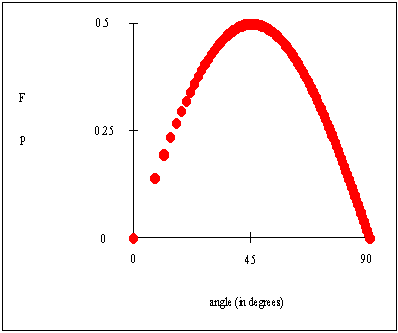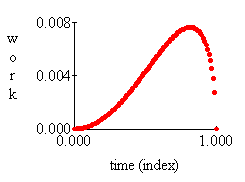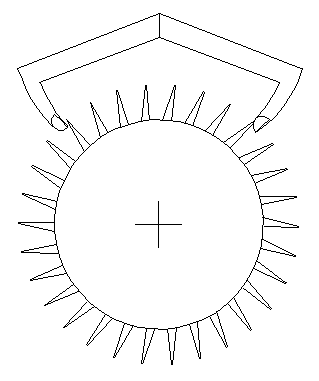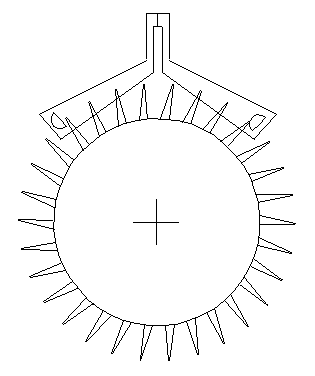7: The Brocot Escapement
Drawing the Brocot pallets is made easier by using a Graham drawing as background. Choose the modified Graham design, which works well in the simulation, because both lock and drop must be considered. Quite simply, the radius of the pallet is equal to the thickness of the modified Graham pallet. Then just position it over the Graham drawing so that the lines meet. This escape wheel drawing is borrowed from the recoil escapement and flipped over horizontally. The rest of the Brocot pallet could be drawn as you wish.
|
The Brocot pallets require both lock and drop. Correctly adjusted, they could behave much like a Graham escapement.Since the pallet is essentially half a circle, the impulse surface is a quarter of a circle.
The impulse angle changes as the tooth slides across the impulse face.
The impulse angle is therefore very inefficient at first, becoming more efficient until reaching a peak, and then losing efficiency towards the end of the stroke. Compare the Graham, which has a straight and horizontal line for Fp, with this.
The impulse face's angle changes unevenly over the time it takes the escape tooth to pass over the impulse face.
 |
If you consider the displacement (or distance moved) of the pallet in the direction of Fp, and multiply this by the force Fp that rotates the pallet at each instant in time, you get a 'work done' curve. This curve looks very different and reveals how inefficient the Brocot design really is.
 |
Table of Contents
Escapements in Motion
Clock Repair Main Page
Links Page

